
Why Zinacantan Chiapas is Called Flower Heaven
Zinacantan is an indigenous village just outside of San Cristóbal de Las Casas in the southern Mexican state of Chiapas.
The town’s original name was Tzinacantlān, which comes from the Nahuatl language and translates to “land of bats.”
However, the name was changed following Spanish colonization because the Spanish conquerors found the original pronunciation challenging.
This vibrant town is located approximately 8 kilometers from San Juan Chamula.
As you approach the village from the surrounding mountains, you’ll notice the hillsides adorned with greenhouses that cultivate the flowers for which the town is renowned.
These flowers are grown locally and distributed to Mexico City and other regions. Zinacantán’s inhabitants are part of the Tzotzil indigenous community.
Getting to Zinacantan, Chiapas from San Cristobal
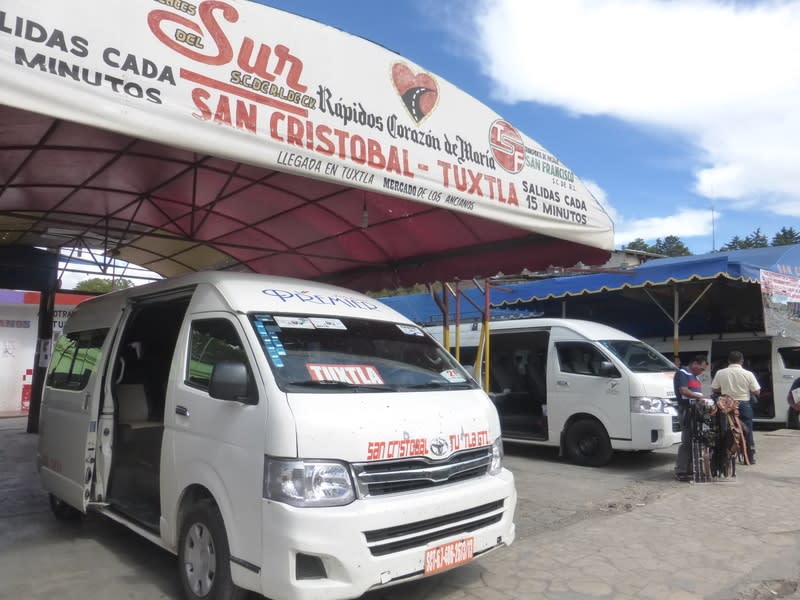
While it may not be widely known, Zinacantan is a popular day trip destination from San Cristóbal de Las Casas, which is just about 10 kilometers away.
The town is easily accessible, only 11 kilometers from San Cristóbal, and can be reached in under 20 minutes.
For those who prefer flexibility, you can independently visit Zinacantan by taking a bus or colectivo.
Alternatively, local tour operators provide affordable day trips to the area.
The most straightforward way to reach Zinacantan from San Cristóbal is by sharing a taxi, which costs around 100-110 pesos for a 20-minute ride.
The taxi will drop you off at the main plaza, where the Church of San Lorenzo stands out.
Top things to see in Zinacantan, Chiapas
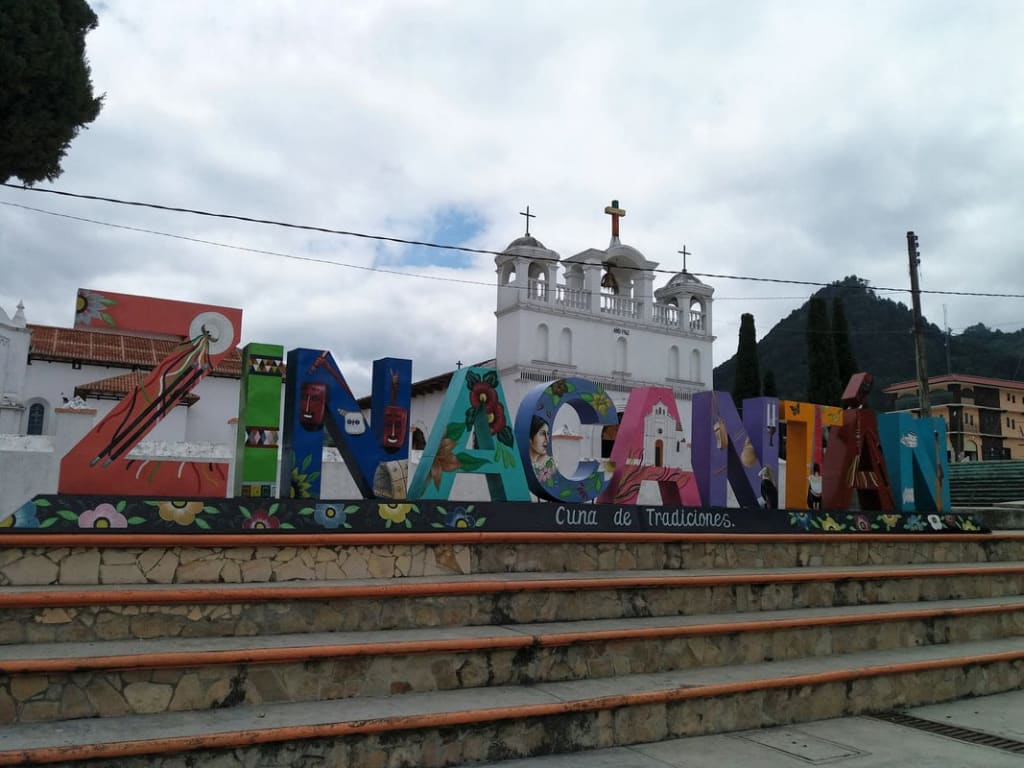
There are two must-see attractions in Zinacantan: exploring the Tzotzil culture and customs through a visit to the local church and touring the traditional handicrafts.
Visit the Church of San Lorenzo
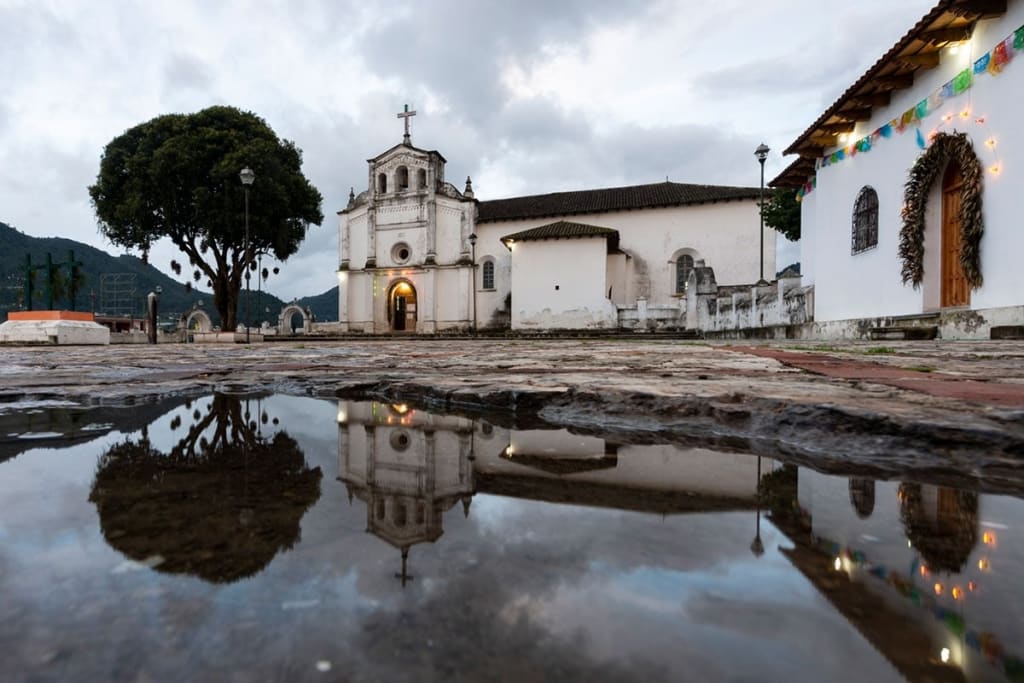
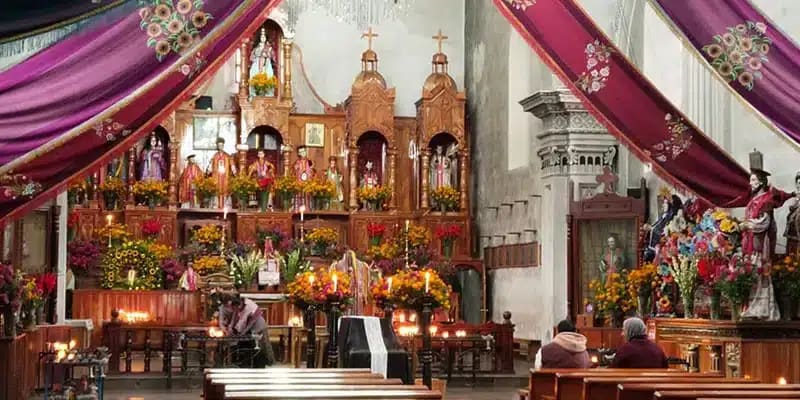
The Church of San Lorenzo is one of the few religious structures in Zinacantan.
Each neighborhood in the town has its own place of worship and photography inside the church was prohibited until recently.
Now, you may take photos as long as you respect those in prayer.
The church interior is stunning and likely unlike anything you’ve seen before.
Before the arrival of the Spanish, the indigenous people of Zinacantan practiced their own spiritual traditions.
However, with the Spanish conquest, they were forced to choose between conversion to Catholicism or death. While many converted, they also preserved some aspects of their original practices.
The Church of San Lorenzo showcases a unique blend of Catholic and indigenous elements.
For instance, the church’s floor is covered with moss, reminiscent of the mountains where the natives once worshipped.
The region is famous for its beautiful flowers, which you’ll find adorning religious icons, pews, and figures inside the church, regardless of the time of year.
During religious celebrations like Holy Cross Day (May 3), the flowers can be so abundant that the walls and ceilings are almost entirely obscured.
If you’re fortunate, you might witness locals praying and chanting in their indigenous languages.
Be sure to look for the small, colorful, hand-painted animal figures, which represent animal protectors. The Tzotzil believe that everyone has a spirit animal that guides them through life.
Chapel of The Lord of Esquipulas
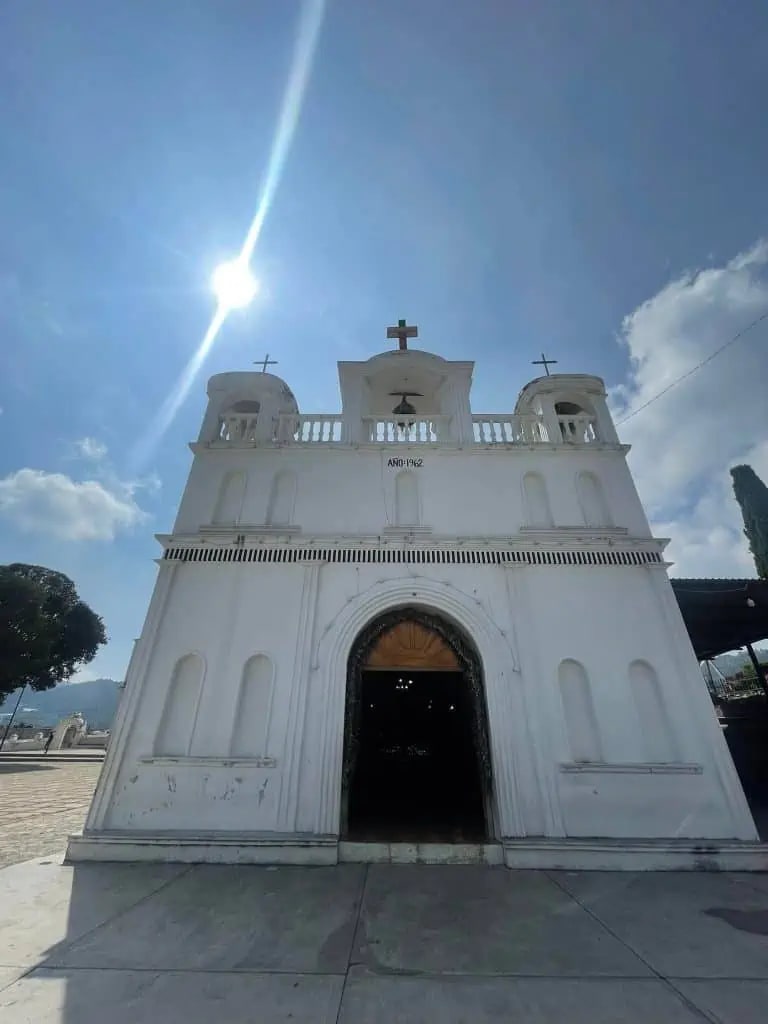
Next to the Church of San Lorenzo, you will find the El Señor de Esquipulas Chapel.
This small chapel is dedicated to a representation of Jesus Christ that originated in the homonymous town of Esquipulas in neighboring Guatemala.
The Chiapas region shares many religious and cultural similarities with Guatemala, due to its proximity to that country.
In some ways, a few aspects of the culture are more comparable to what you will find in Guatemala than in other parts of Mexico.
Admission to the church is free, but it is recommended that you provide a small donation. 20 pesos or so will suffice (or a couple of U.S.).
You will probably be approached by one of the elderly residents of the town with a donation box as you enter.
Right out front, you will see a large sign displaying “Zinacantan” in giant, colorful letters.
Obviously, getting a photo of these letters is a must in every Mexican town or city.
San Sebastian Church
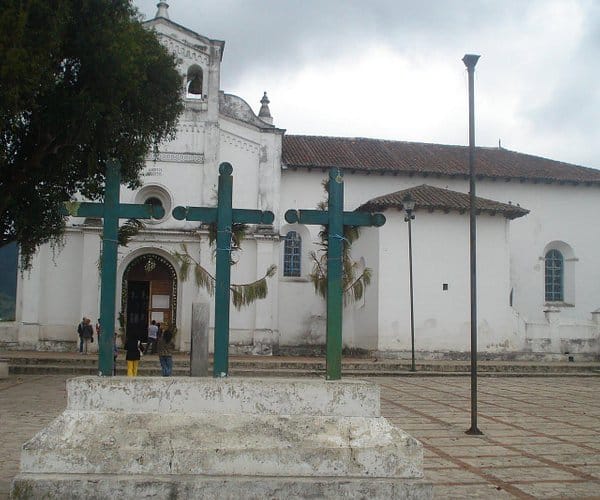
San Sebastian is another small, beautiful Catholic church just off the main square of Zinacantan.
This church features aspects of Mayan culture mixed with traditional Catholicism.
San Sebastián has pews and a more classical Catholic church interior. However, you will notice that both the portal and the altar are completely decorated with thousands of flowers, an icon of the indigenous culture of Zinacantan.
In addition, a 20 pesos donation or something similar is suggested upon entering the church.
Visit the Indigenous Women’s Textile Cooperative
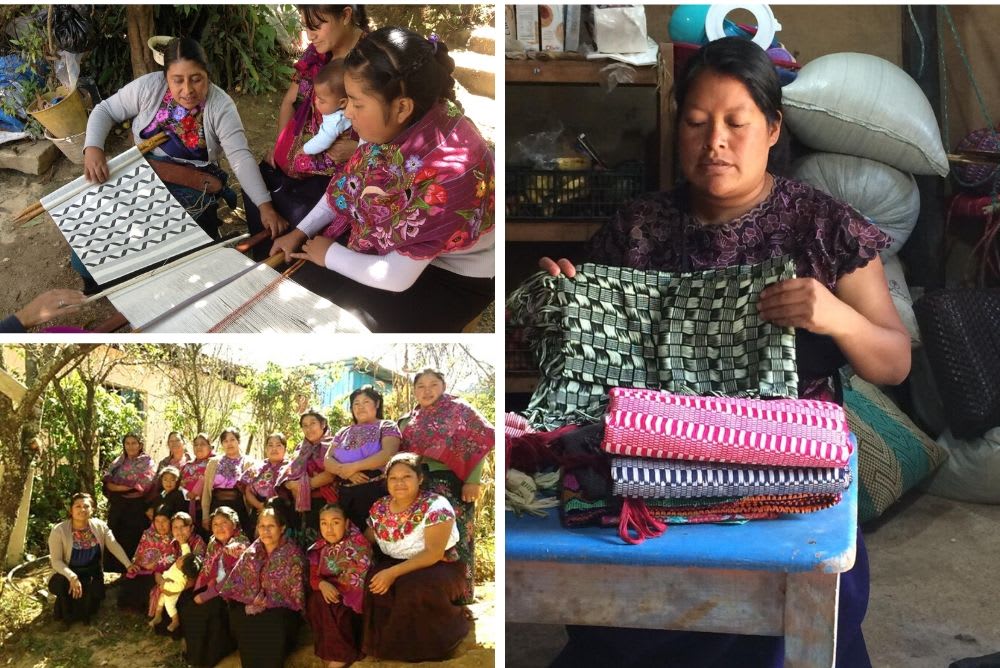
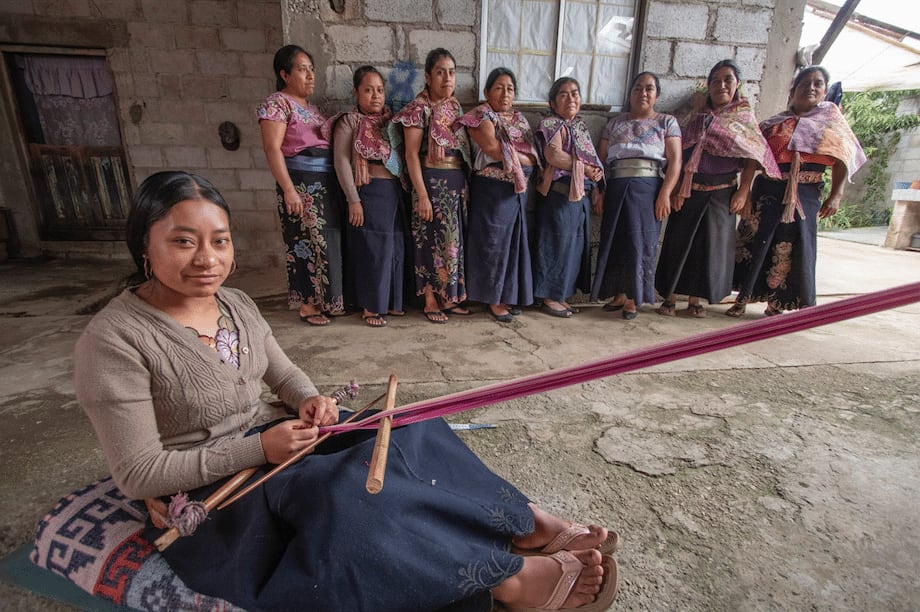
No visit to Zinacantan is complete without a stop at the indigenous women’s textile cooperative.
When you pass by, the Tzotzil women will happily show you how they make their handcrafted garments and fabrics from their shop.
They often do this using methods that have been passed down from generation to generation.
In the 1980s, a German couple moved to the mountains of Chiapas, armed with a sewing machine, and taught the women embroidery.
Since then, many women in this area have worn garments with embroidered flowers, animals, and peacocks.
Please note that the people of Zinacantan don’t wear this traditional costume to please tourists, it is their daily attire.
Historically, this was white. Now, however, they wear pok’u’ul in shades of red, blue, green, or purple. The women wear huipil blouses combined with dark loom skirts with subtle details.
You may want to read: Traditional Mexican Clothing: Mexico’s Prettiest Outfits Revealed
These skirts are usually made of wool, as it is cold in the highlands of Chiapas at night and during winter.
You will notice that most women wear clothes of the same color, depending on what is trending. For the past few years, this has been purple.
Needless to say, people here don’t speak English, so if you cannot speak Spanish, it is helpful to go with a guide so you can communicate better.
Of course, their goal is to get you to buy something from the store. However, if you are just looking for a lesson and some information, you can tip them for their time.
Textiles and clothing from Zinacantan, Chiapas
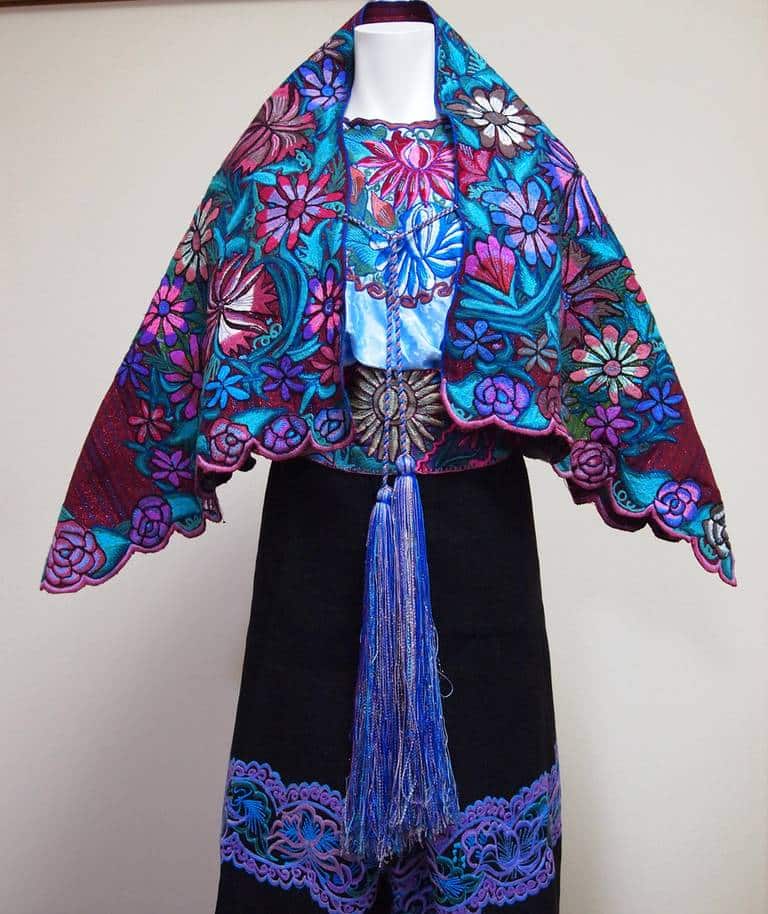
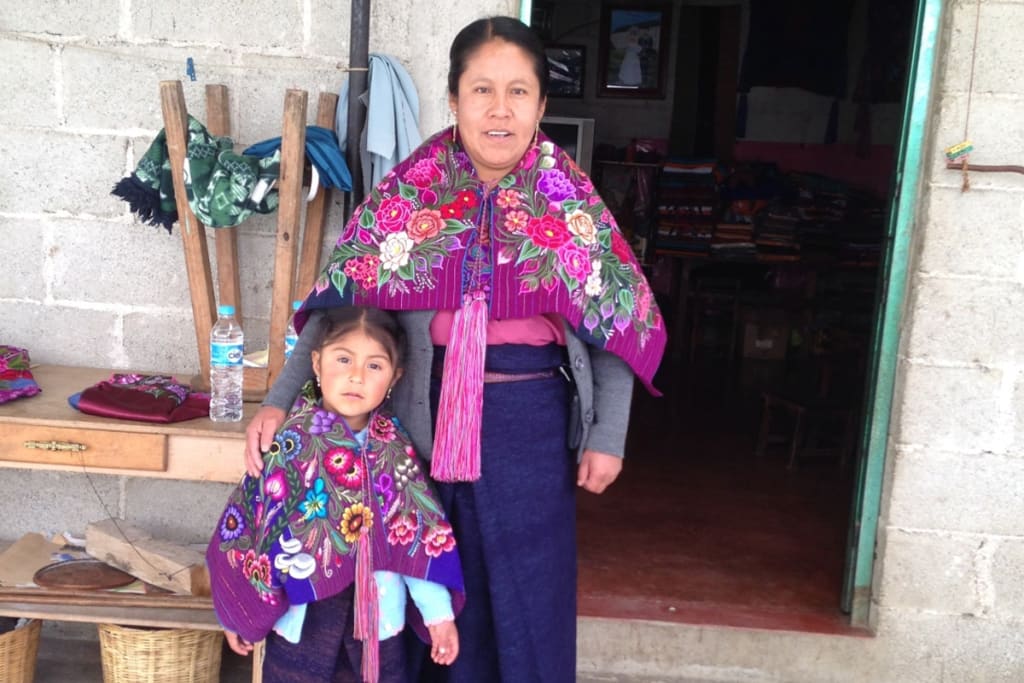
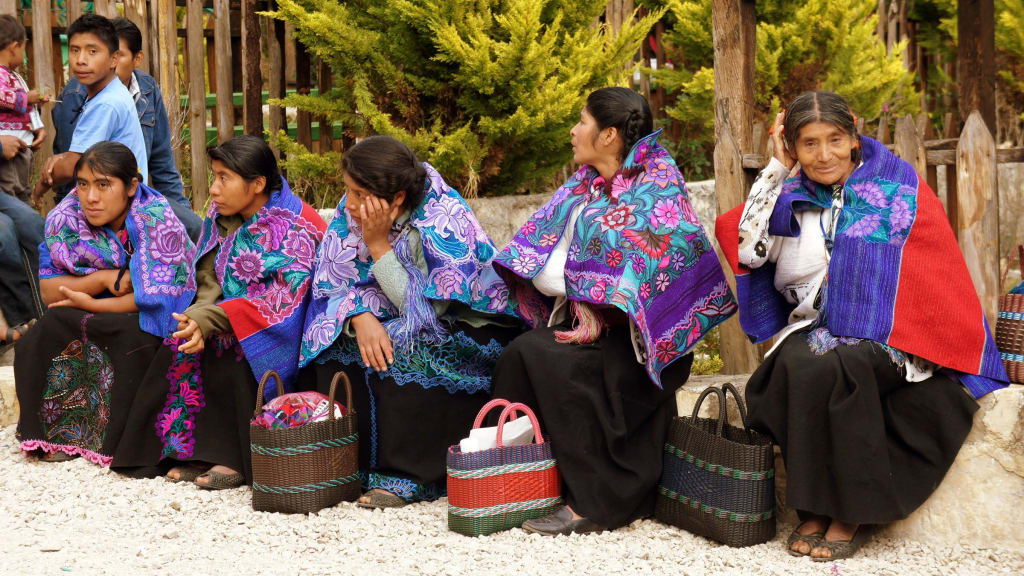
Again, the indigenous people of Zinacantan wear embroidered floral prints and weavings.
That’s because the town is known for its cultivated flowers (you’ll see hundreds of greenhouses in the valley when you arrive in Zinacantan).
So, to represent their culture, the women artisans weave flowers into traditional textiles.
As such, you can find blouses, shawls, huipiles, table runners, pillow covers, and many smaller souvenirs such as purses and bracelets with the work.
While some of the clothing is hand-embroidered with floral motifs, Zinacantan is most famous for its traditional huipil blouse or dress, made with a backstrap loom.
It is common to see women wearing a huipil for everyday wear in Zinacantan, throughout southern Mexico and Central America.
You can also see Indigenous groups throughout the Yucatan peninsula wearing huipiles, which, in the indigenous Nahuatl language, is called huipilli, and translates as blouse or ornate dress.
Other indigenous groups may wear huipiles that represent their own culture or tradition. Common symbols woven into huipiles feature animals, plants, or geometric patterns.
Visit the Zinacantan, Chiapas Market
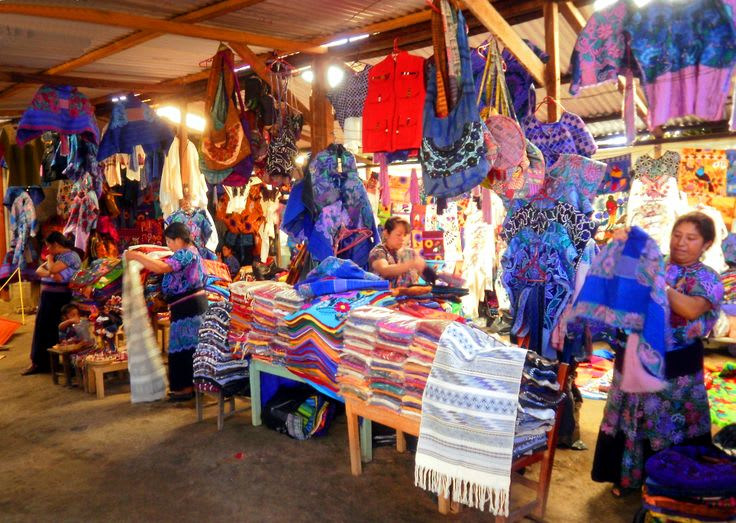
The Sunday market starts quite early and is open from 6 a.m. to 10:30 a.m.
That said, you may want to consider visiting the Zinacantan market first thing in the morning so you don’t miss out on the shopping, especially if you want to see the full range of textiles available.
Experience the Fiestas!
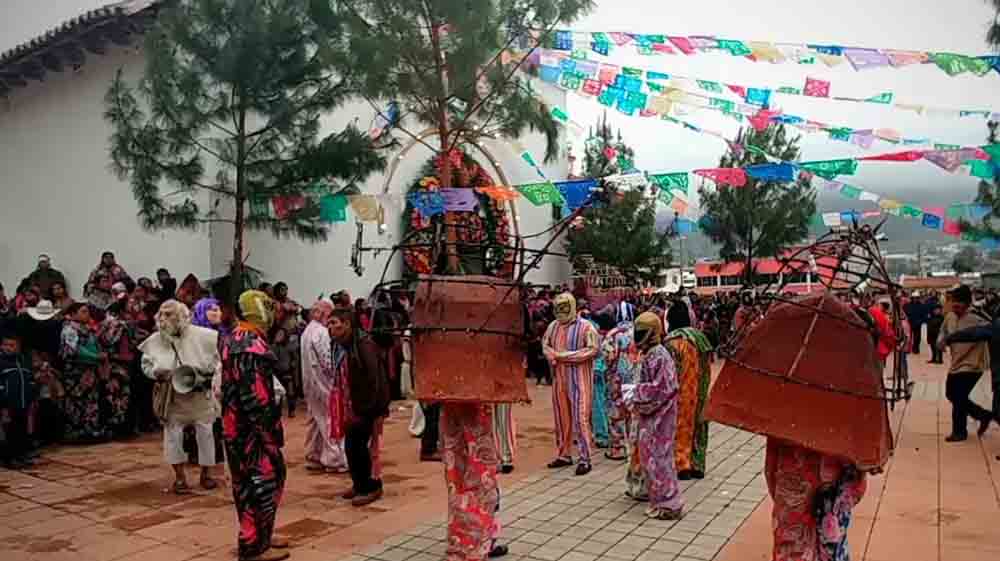
If you visit Zinacantan on a festival or holiday, you are in for a real treat.
Feast days take place both inside and outside the churches in honor of a particular Saint in the calendar year.
Festivities and large fiestas are common in all of Mexico’s small towns.
The two most important fiestas are January 18-22 in honor of San Sebastian and August 10 in honor of the patron saint San Lorenzo, after whom the municipality is named.
During this time, items are collected to decorate the church and used to perform rituals (flowers, pine needles, candles…), while fireworks or “bombs” are used to celebrate outside the church.
Both men and women dress in traditional costumes.
Zinacantan, Chiapas: Final Thoughts
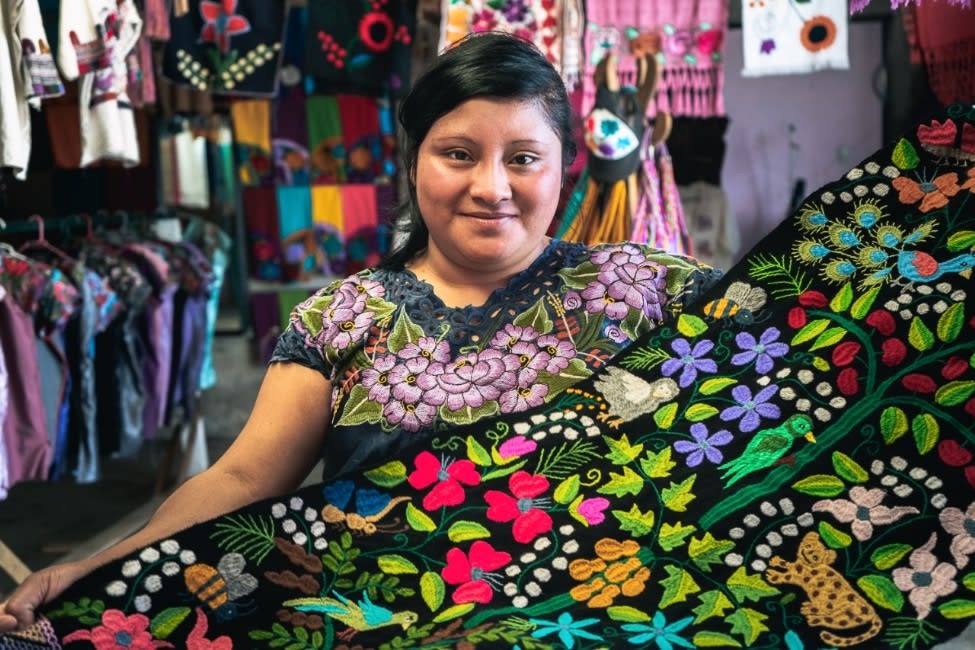
Zinacantan is unique and beautiful for its floral culture, ancient weaving techniques, and local handicrafts.
If you decide to visit, be sure to bring extra pesos and plan your trip for a Sunday, when the fascinating floral prints are on full display in the market.
As such, visiting Zinacantan during any season is sure to stimulate the senses!
The indigenous community of Zinacantan is a must-see if you wish to travel back and feel the vibes of pre-colonial times.